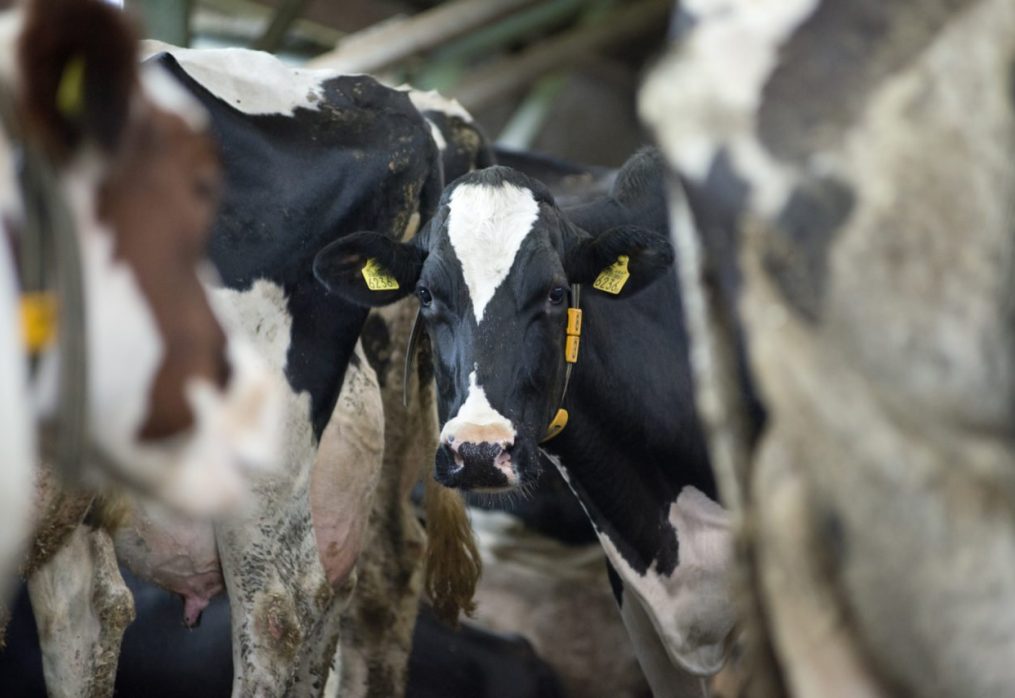10 Key Indicators of a Healthy and Well-Fed Cow
As a dedicated dairy farmer, understanding the well-being and feeding patterns of your cows is paramount to ensuring a thriving herd. Recognizing the signs of a healthy and well-fed cow can empower you to promptly identify any potential issues and respond effectively. In this guide, we will provide you with invaluable insights into the unmistakable signs that your cow is in good health and receiving the nutrition it needs.
- Clean Nose and Mouth
A healthy cow typically exhibits a clean nose and mouth, free from dribbling or discharge. Consistent saliva dribbling around the mouth may be a sign of concern, prompting you to closely observe your cow for any additional signs of illness. A healthy cow should maintain a closed, clean mouth.
- Appearance, Alertness, and Behavior
Veteran farmers often recognize this sign easily. A healthy cow is characterized by its alertness and responsiveness to its surroundings. It stands on all four legs with an attitude that is free from distraction and low energy.
- Undamaged Knees and Regular Movement
This sign requires keen observation. When healthy, a cow should exhibit well-balanced movement on all fours, indicating regularity. Any deviation from this may suggest pain or discomfort in the animal’s legs. As a general rule, the knees should remain undamaged with full hair coverage.
- Good Rumen Fill and Strong Chewing Activity
Consistently poor eating habits in your cow are a clear indicator of potential health issues. Ensuring that your cows are provided with quality feed, such as nutritious maize silage, is crucial for optimal health. A healthy cow should demonstrate strong chewing activity, with a normal range of 55 to 75 chews per cud.
- Steady and Quiet Breathing
Just like in humans, a healthy cow should exhibit steady and almost soundless breathing while at rest. Although various factors like altitude, activity, and temperature may affect breathing, at rest, there should be minimal chest movement. Typically, a healthy cow breathes at a rate of 10 to 30 times per minute.
- Body Size/Weight and Fat
Although assessing a cow’s health by visual inspection can be challenging, a healthy cow generally possesses adequate flesh cover and fat. Sudden weight loss, despite a consistent feeding diet, is a cause for concern and should prompt further investigation.
- Body Temperature
While environmental factors can influence body temperature, a healthy cow typically maintains a rectal temperature of approximately 38 to 38.5 degrees Celsius.
- Clean Hindquarters
Inspecting the hindquarters of your cow is essential. A healthy cow should exhibit cleanliness with no dung present on both sides of the rump. Any unusual dirtiness or asymmetrical soiling may indicate a potential health issue.
- Soft, Symmetrical Udder
When felt by hand, a healthy cow’s udder should be soft, with no signs of swelling or injury to the teats or teat ends.
- Shiny Coat with No Wounds
A healthy cow generally boasts a glossy coat all over its body, free from wounds or injuries.
By observing your cow’s general condition and recognizing these signs, you can take the first crucial step in assessing their health. Early detection of any potential issues is essential for the well-being of your herd. If any of these signs raise concerns, consulting a veterinarian is a prudent course of action.
For expert advice on maintaining the health and well-being of your dairy cattle, do not hesitate to contact our team of dairy cow experts. Your cows will thank you for the care and attention they receive, ensuring a thriving and productive herd.
